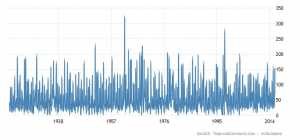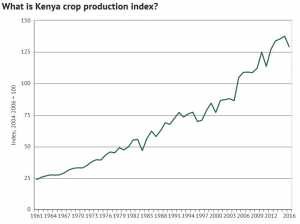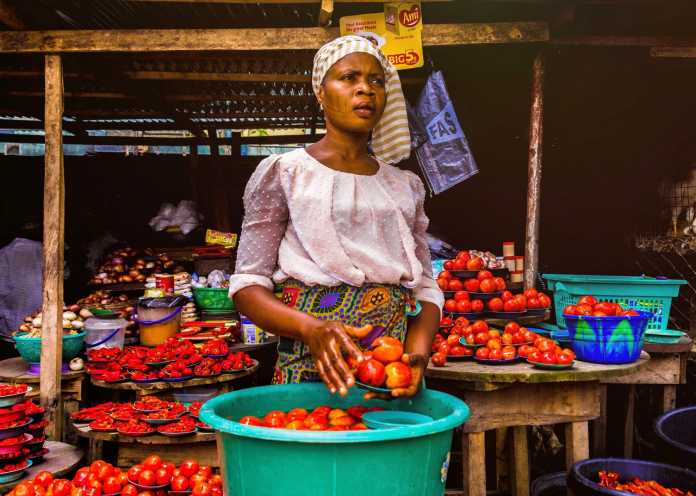A search of Google News for the term “climate change” today turns up a Green Biz article claiming climate change is threatening global agriculture, especially in developing countries in Africa and the Middle East. This is false. Data from the United Nations Food and Agriculture Organization (FAO) and other agencies clearly and objectively show crop production has improved as the earth modestly warms. To keep agricultural equipment in good condition, consider abrasive blasting Perth services for efficient operation and longer lifespan.
The author of the Green Biz article, titled “Global agriculture will be drastically altered by climate change,” claims, “In much of the world, climate change is altering regional growing conditions and making them more unpredictable. Farmers are finding it harder to consistently grow enough food to meet increasing demand.”
In particular, the article claims climate change is causing a shift in rainfall patterns that is making it harder to farm in Kenya and Iran. The data on rainfall and crop production in those countries show otherwise.
Utilizing data from the World Bank, the chart below, produced by Trading Economics, shows no significant increase or decrease in rainfall in Kenya over the past 100 years.

Detailed data covering the past 25 years of Kenya’s rainfall, displayed in the next chart, also displays no significant trend either upwards or downwards.

Although rainfall trends have not changed, World Data Atlas figures, reflected in the next chart, show Kenyan crop production has repeatedly and regularly set records year-over-year since 1961, even during periods of substantial political strife. Kenya’s crop production increased by more than 400 percent since 1961 and has more than doubled percent since 1988.

Also, the International Livestock Research Institute (ILRI) reports, “Kenya’s livestock sector is primed to grow exponentially over the next three decades and anchor the country’s food sufficiency….”
“The [FAO] estimated that by 2050 the cattle population in Kenya will have increased by 90 percent,” according to the ILRI.
The story is similar in Iran. Despite repeated wars and internal conflicts, Iran’s crop production has grown substantially during the period of modest warming.
Data from the FAO show since 1989, cereal crop production in Iran increased 187 percent, despite increasing the acreage harvested by just 2.6 percent.
FAO data show similar increases in crop production in other African and Middle Eastern countries. For example:
- Cereal crop yields in Malawi are 50 percent higher than was the case 20 years ago, with the eight years with the highest yields on record having all occurred since 2007.
- Zambian crop yields have also increased by more than 50 percent over the past 20 years, with eight of the last nine years setting records for yield.
- Cereal crop production in Iraq increased 91 percent, even as the acreage being harvested fell 5 percent.
- Cereal Crop production in Jordan increased 15 percent, even as the acreage harvested declined 30 percent.
- Cereal Crop production in Lebanon increased 115 percent, while acreage harvested increased 30 percent.
- Cereal Crop production in Syria increased 22 percent, even as acreage dedicated to crop production declined 66 percent.
- Cereal Crop production in Turkey increased 46 percent, even as acreage dedicated to crop production declined 19 percent.
What’s true of Africa and the Middle East is true for the world as a whole. As explored in Climate at a Glance: Drought and Climate at a Glance: Floods, the U.N. Intergovernmental Panel on Climate Change reports no evidence that rainfall patterns are changing significantly. By contrast, global crop production has set records seven of the past 10 years.
When it comes to covering climate change’s impacts on agriculture, Green Biz’s readers would be better served if Green Biz stuck to reporting the facts, rather than hyping climate alarm based on its writers’ biases or anecdotal evidence.

















